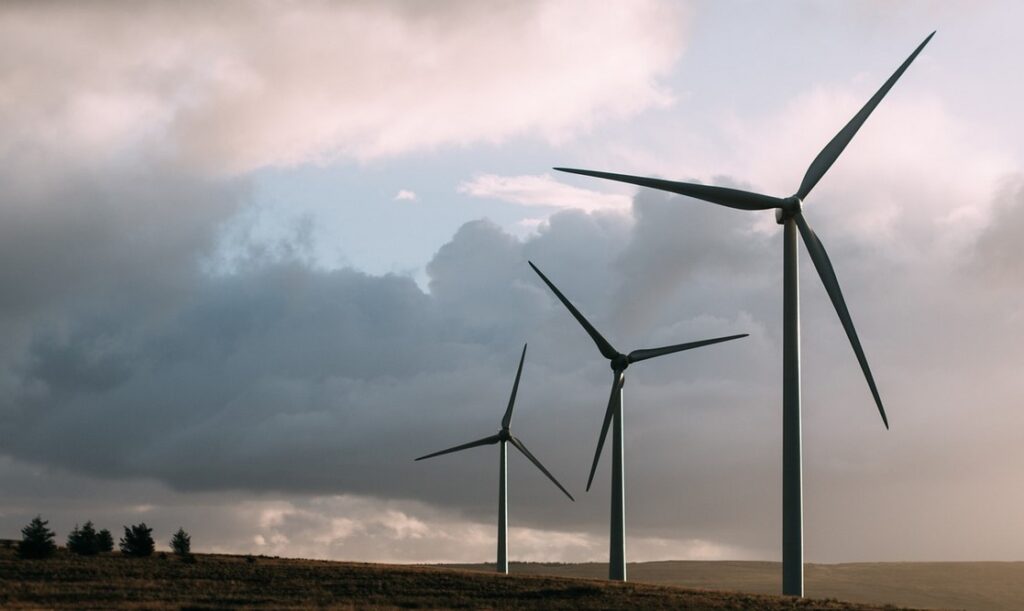 By B.N. Frank
By B.N. Frank
While the Biden Administration continues to endorse and fund controversial wind projects (see 1, 2, 3, 4, 5), American opposition to them is not going away (see 1, 2, 3, 4, 5, 6, 7, 8, 9, 10). In fact, last year a lawsuit led to two turbines being demolished in Massachusetts. Additionally, Page County, Iowa residents filed a lawsuit to stop a proposed wind project as well. More recently in Tama County, Iowa, opposition may have prevented development from proceeding.
From Wind-Watch.org:
Gone with the wind? Apex closes up shop in Tama County
After first leasing office space in downtown Dysart roughly a year ago, the Virginia-based company Apex Clean Energy – better known in Tama County by its local commercial wind energy project name, Winding Stair Wind – has elected to close up shop for the time being and set its sights elsewhere.
“We are continuing to assess the fluid interconnection situation for our Winding Stair Wind project in Tama County,” Drew Christensen, Director of Public Engagement for Apex, told the North Tama Telegraph in a recent email when asked to provide comment regarding the status of the project in Tama County.
“As we wait for that picture to become more clear,” Christensen continued, “we have not renewed the lease at our office in Dysart and have shifted our focus to other projects in Iowa and the broader Midwest.”
According to a project map published on its website, Apex currently has one wind project in development in Iowa – Great Pathfinder Wind in Boone and Hamilton counties – and one project in operation – Upland Prairie Wind in Clay and Dickinson counties.
Upon completion, the planned Tama County project is expected to generate up to 210 megawatts of energy from approximately 50-70 turbines, according to a project profile fact sheet distributed last year.
The project’s footprint would occupy roughly the northeastern quadrant of the county from Buckingham in the north to the outskirts of Elberon in the south to Traer in the west while including the areas around both Clutier and Dysart.
The project has certainly not been without controversy this past year with the local coalition Tama County Against Turbines (TCAT) originally forming last winter in direct opposition to it.
Since its inception, TCAT has repeatedly called for the county to put in place a moratorium on commercial wind energy projects – a move which thus far the board of supervisors has not undertaken.
TCAT also successfully steered the passage of a ballot proposition last November to increase the number of supervisors in the county from three to five.
In the face of such opposition, Apex did manage to broker more than two dozen easements with landowners over the last year and a half.
Using Tama County land records accessible online, (as of publication) some 25 easements have been filed with the county recorder between Winding Stair Project LLC and landowners encompassing more than 3,380 acres.
During a Tama Co. Board of Supervisors meeting last May, Christensen shared that Apex’s Winding Stairs Wind project would need “somewhere in the realm of north of 20,000 [acres]” to be viable – with the caveat that each turbine would take up less than one acre of land.
The individual easements recorded so far range in size from just under three acres to over 500 acres.
Almost a dozen of those easements have been signed by absentee landowners.
While the first easement for Winding Stair Wind was signed way back in July of 2021, the final (as of publication) was signed in June of 2022 between Apex and a couple residing in Black Hawk County.
When asked if Winding Stair Wind leaseholders will receive payments while the project is on pause, Christensen responded: “While we can’t discuss specifics of the lease, in broad terms, landowners are compensated both during development, construction, and operation of a project.”
Once operational, the project is predicted to have major tax implications for the county according to an economic impact study commissioned by Apex, part of which was shared with the North Tama Telegraph by Christensen last spring.
Several assumptions are built into the economic analysis including that the project would enter service on January 1, 2025, and would cost (for tax purposes) $503 million.
Over 30 years of operation*, the project would net local school districts over $40.8 million in tax revenue, according to Apex, with an average of $762,797 going to North Tama annually and $600,162 going to Union annually.
“I would note,” Christensen told the Telegraph in April of last year in regard to the study, “that there’s good confidence in the overall amount, but the breakdown between school districts is closer to an estimate at this point given that we’re at an early stage and don’t know how [wind] facility locations will precisely break down between districts.”
But for now, the project appears to be in a stall.
Whether or not further development is ‘gone with the wind’ will remain to be seen.
Source: MAR 2, 2023 | RUBY F. MCALLISTER | northtamatelegraph.com
Activist Post is Google-Free
Support us for just $1 per month at Patreon or SubscribeStar
Activist Post reports regularly about wind power and unsafe technologies. For more information, visit our archives.
Image: Pixabay
Become a Patron!
Or support us at SubscribeStar
Donate cryptocurrency HERE
Subscribe to Activist Post for truth, peace, and freedom news. Follow us on SoMee, Telegram, HIVE, Flote, Minds, MeWe, Twitter, Gab, What Really Happened and GETTR.
Provide, Protect and Profit from what’s coming! Get a free issue of Counter Markets today.

Be the first to comment on "Wind Developer Decides to “set its sights elsewhere” Perhaps due to Local Opposition"